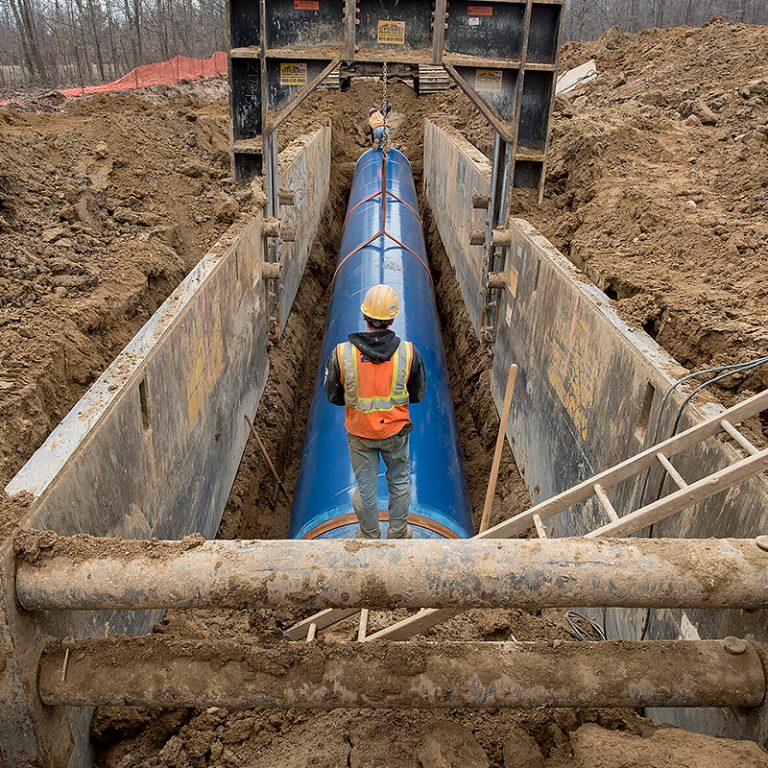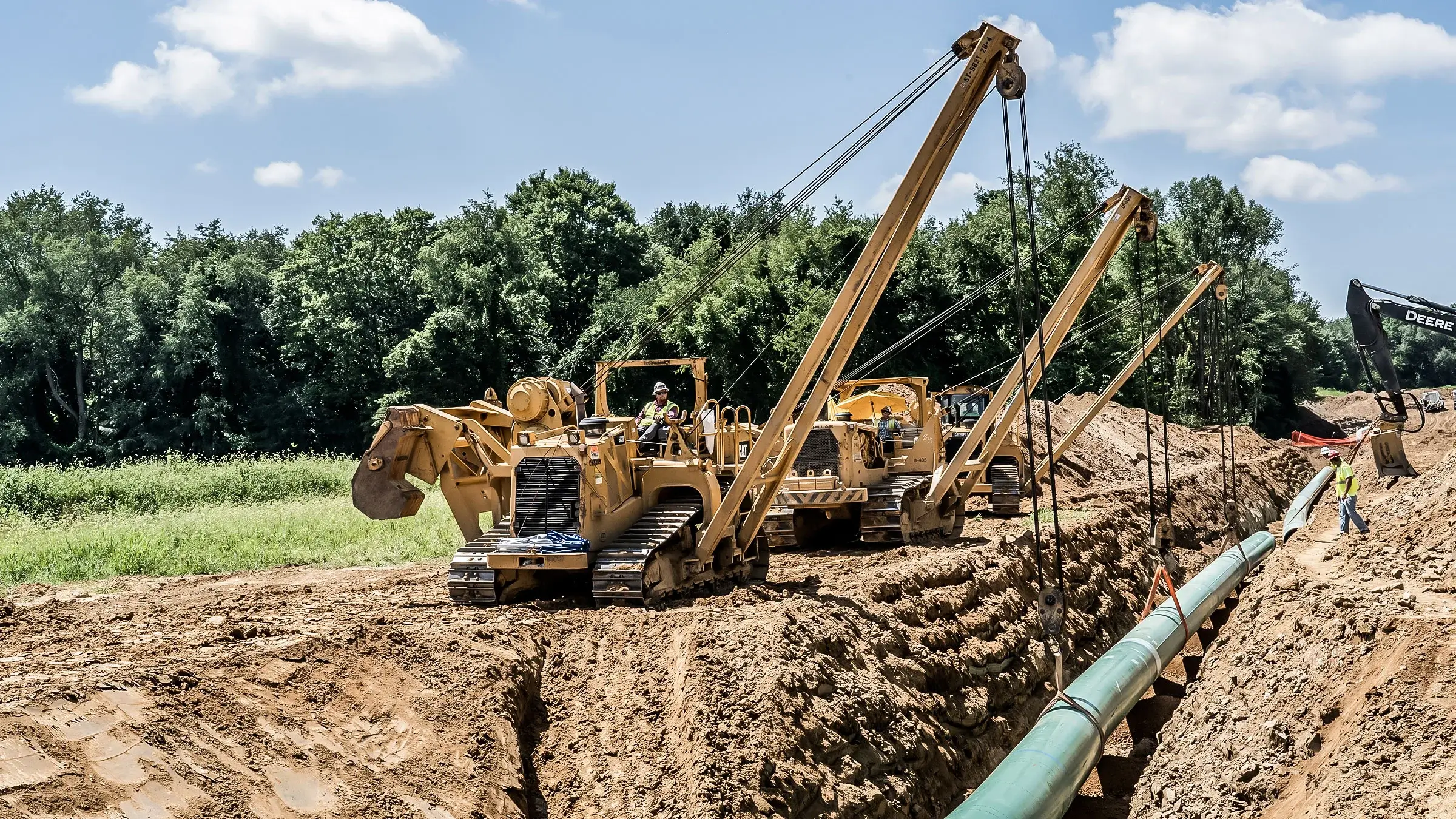Success Begins With Proper Creek Pipe HDPE installation
A Deep Dive Into Pipes Installation: Vital Elements and Factors To Consider for Effective Projects
Effective pipe installation is a vital aspect of design jobs. It involves a range of variables, from material option to exact sizing and style. Each decision can notably impact the system's performance and long life. Comprehending these elements is crucial for staying clear of expensive blunders. Creek Pipe contact. As groups browse with the intricacies of installation, several vital factors to consider arise that warrant interest. What are the crucial elements that can make or break a piping project?
Recognizing Pipe Materials and Their Applications
When choosing pipe materials, one should consider the specific applications and environmental problems they will deal with. Different materials use distinctive residential or commercial properties that accommodate numerous demands. For instance, PVC is lightweight and immune to rust, making it perfect for water circulation systems. On the other hand, steel pipes offer stamina and durability, suitable for high-pressure applications but may need protective finishes to protect against rust.Copper pipelines are preferred for pipes as a result of their antimicrobial homes and simplicity of installation, while polyethylene is commonly utilized in underground applications due to its flexibility and resistance to cracking.The choice of product additionally rests on temperature level extremes, chemical exposure, and installation place. For high-temperature applications, materials like CPVC or PEX can be beneficial. Eventually, comprehending the attributes and restrictions of each material help in making notified decisions that boost system effectiveness and longevity.
Importance of Correct Sizing and Style
Proper sizing and layout of pipes are crucial for guaranteeing excellent circulation rates and decreasing stress loss. These aspects also play a substantial function in identifying the compatibility of materials utilized in the installation. A systematic approach to sizing and layout can considerably boost the performance and durability of a piping system.
Influence On Circulation Rates
Circulation prices in piping systems are critically affected by the sizing and style of the pipelines. Correctly sized pipelines guarantee that the fluid can relocate efficiently, decreasing turbulence and optimizing flow capability. Extra-large pipes can cause reduced flow speeds, while small pipes may limit circulation, leading to raised friction and potential obstructions. The design needs to additionally consider aspects such as pipe product, inner surface smoothness, and layout, as these add to the general efficiency of liquid transportation. Furthermore, the arrangement of fittings and connections within the system can affect circulation prices. Consequently, precise attention to pipe sizing and style is essential for optimizing flow performance in any piping installation job.
Pressure Loss Considerations

Exactly how can pressure loss significantly affect the performance of a piping system? Stress loss is an important aspect that can substantially lessen the efficiency of fluid transportation systems. When pipes are improperly sized or made, extreme stress loss might occur, resulting in decreased circulation rates and raised energy intake. This ineffectiveness can lead to greater operational prices and prospective system failings. Appropriate sizing and design are necessary to reduce stress loss, guaranteeing that liquid dynamics continue to be optimal throughout the system. Designers have to meticulously think about variables such as pipe diameter, size, and product to accomplish a reliable balance. Ultimately, resolving pressure loss during the layout phase can improve integrity and durability, making it crucial for effective piping projects.
Material Compatibility Factors
Pressure loss is not the only variable that can impact the performance of a piping system; product compatibility likewise plays a significant duty in overall efficiency. Making sure that the materials made use of in a piping system are suitable with the liquids they will certainly deliver is vital. Various materials can react detrimentally to numerous chemicals, resulting in deterioration, degradation, or contamination. This can eventually jeopardize the honesty of the system and influence its long life. Additionally, appropriate sizing and layout are very important to accommodate thermal expansion and contraction, which can even more influence material performance. Evaluating elements such as temperature, pressure, and chemical composition is vital in choosing proper materials, consequently boosting system dependability and minimizing maintenance costs in the long term.
Strategies for Accurate Pipe Installation
Precise pipe installation is important for assuring system effectiveness and long life. A number of strategies can improve the accuracy of this process. Initially, cautious dimension is necessary; installers ought to make use of high quality devices such as laser levels and tape actions to establish the exact sizes and angles called for. Next off, proper pipe cutting methods, like making use of a pipe cutter as opposed to a hacksaw, assurance tidy sides that help with much better connections. In addition, using alignment tools, such as pipe jigs, can significantly boost precision throughout assembly. It is additionally advisable to take into account thermal growth; enabling ample spacing and expansion joints can avoid future misalignments. Lastly, the installation team ought to adhere to manufacturer guidelines to follow particular suggestions connected to each pipe kind. By carrying out these strategies, the likelihood of leaks and system failures decreases, eventually adding to an extra dependable piping system.
Making Certain Pipe Alignment and Assistance
Correct placement and assistance are critical to the honesty and efficiency of any kind of piping system. Misalignment can result in enhanced tension on joints, prospective leaks, and reduced efficiency. To guarantee proper alignment, it is necessary to use appropriate devices such as laser levels and alignment determines. These tools assist achieve specific positioning, guaranteeing that pipelines are set up based on layout specifications.Support systems have to be created to accommodate thermal development and contraction, along with the weight of the pipes and their materials. Choosing the right sort of supports, hangers, and braces is important. Each need to be set up at defined intervals to protect against sagging or excessive tension on the pipelines. Regular examinations following installation can assist identify any kind of imbalances or signs of insufficient why not try these out assistance. By prioritizing placement and assistance, one can significantly boost the resilience and functionality of the piping system.
Common Installation Blunders to Avoid

Testing and Inspection for Quality Control
Although the installation process might show up complete, comprehensive screening and evaluation are essential to ensuring the lasting reliability of a piping system. Numerous methods are used to evaluate the honesty of the installation, including stress tests, aesthetic evaluations, and non-destructive screening (NDT) techniques. Pressure examinations confirm that the system can hold up against operational Click This Link problems without leakages, while visual assessments help determine any kind of visible flaws in the pipelines or joints. NDT methods, such as ultrasonic or radiographic screening, supply insights into the product honesty without jeopardizing the system.Additionally, recording the screening results is vital for future referral and compliance with industry criteria. This documents serves not only as a top quality assurance step yet additionally as a legal secure. Inevitably, a detailed testing and assessment method adds to the overall safety and effectiveness of the piping system, guaranteeing it meets the required efficiency standards with time.
Maintenance Tips for Durable Pipe Systems
Preserving a pipeline system calls for routine examinations and keeping track of to determine prospective problems before they intensify. Executing effective cleaning techniques is also vital for preventing buildup that can prevent efficiency. With each other, these methods contribute to the durability and dependability of the piping infrastructure.
Regular Inspections and Surveillance
Normal assessments and tracking are vital for guaranteeing the longevity and performance of pipe systems. Routine assessments can aid recognize prospective issues such as leakages, deterioration, or obstructions before they rise into significant troubles. Executing a schedule for regular evaluations permits for the early discovery of deterioration, enabling prompt repair work. Surveillance pressure degrees and flow prices can likewise offer beneficial insights right into system performance, making certain that any type of abnormalities are attended to promptly. In addition, the use of innovative technologies, such as infrared cams or ultrasonic screening, can improve the examination process by supplying detailed info concerning pipe conditions. Eventually, regular monitoring and assessments add to the reliability and longevity of pipe systems, decreasing the threat of costly repair work and downtime.

Effective Cleaning Up Strategies
Effective cleaning methods are crucial for maintaining the stability and performance of pipe systems. Consistently scheduled maintenance, such as flushing systems with water, helps eliminate debris and accumulation. For even more persistent clogs, specialists frequently recommend hydro jetting, which utilizes high-pressure water to clean pipe interiors completely. Chemical cleaners can likewise be used however must be picked look at these guys meticulously to prevent harmful pipes. On top of that, employing tools like pipe cameras can aid in identifying problem locations and making certain reliable cleansing. Preserving appropriate water drainage and preventing the disposal of dangerous compounds down pipelines even more contribute to long life. Overall, constant cleaning techniques not only boost efficiency however also reduce the threat of expensive repair work in the future.
Frequently Asked Inquiries
What Are the Labor Prices Connected With Pipe Installation Projects?
Labor costs for pipe installation tasks vary widely, affected by aspects like project intricacy, neighborhood wage rates, and called for skills (Creek Pipe Company). Typically, these expenses can range from $50 to $100 per hour, relying on the workforce included
How Do Regional Laws Affect Pipe Installation Practices?
Local laws significantly affect pipe installation practices by developing security requirements, product specs, and installation approaches. Compliance with these laws guarantees job safety, environmental defense, and adherence to local codes, eventually influencing general task success and costs.
What Equipment Are Essential for Pipe Installation?
Crucial devices for pipe installation consist of pipe wrenches, cutters, and fittings. Furthermore, sealers, measuring tapes, and levels ensure precision and durability. Appropriate devices advertises performance and adherence to safety and security standards during the installation process.
Exactly How Can Weather Condition Issues Influence the Installation Refine?
Climate conditions significantly affect the installation procedure, as extreme temperatures, rain, or wind can impact material stability, worker safety, and project timelines. Proper planning and scheduling are important to alleviate these prospective difficulties during installation.
Are There Warranties for Installed Pipe Systems?
Service warranties for installed pipe systems typically vary by maker and installation specialist. Commonly, they cover issues and handiwork for a given period, guaranteeing the system's reliability and supplying satisfaction to the homeowner.